Leica M8.2 - or - Why I Bought a 10 Year Old Digital Camera in 2017
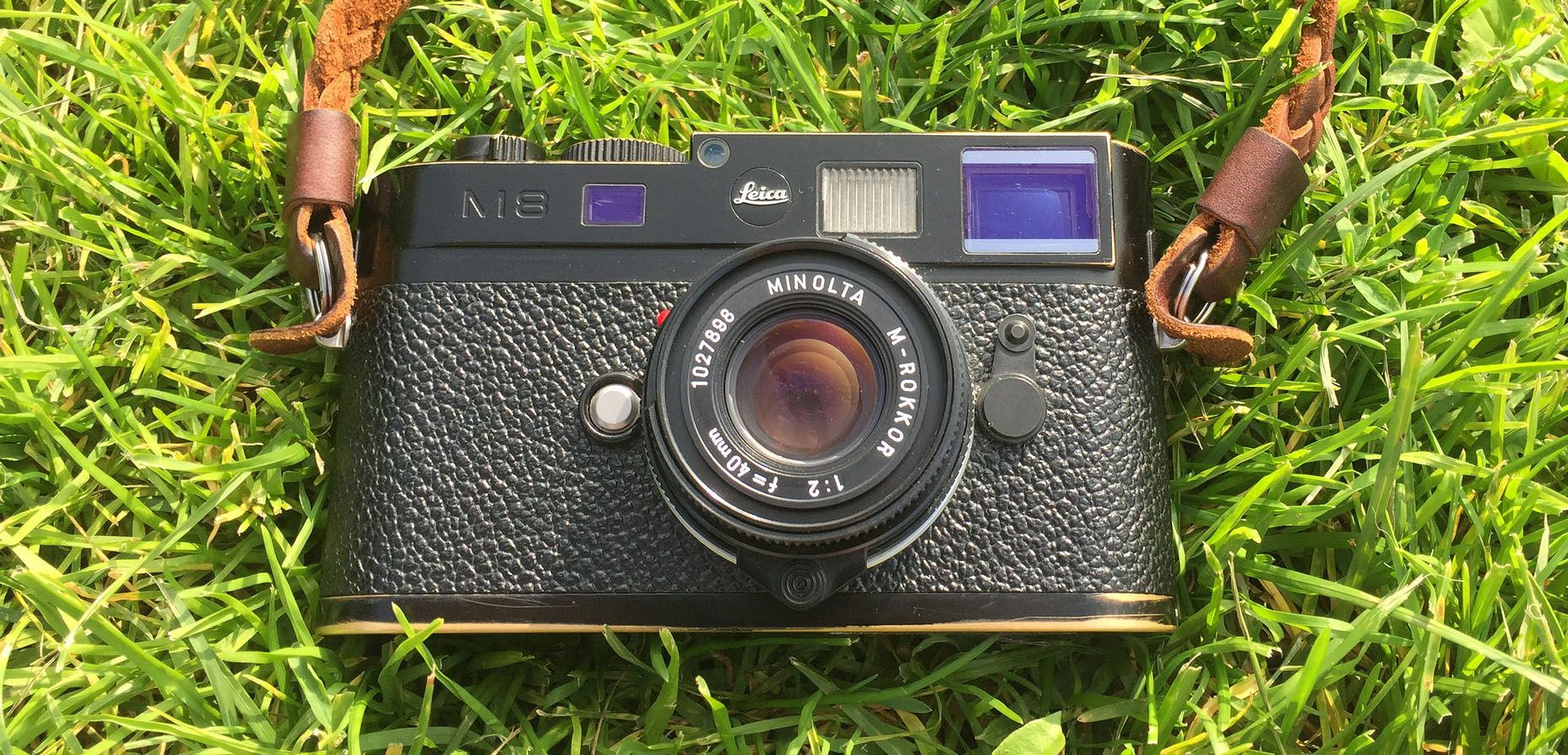
Introduction
We live in an amazing time. The technology that we have grown accustomed to having in our pockets and using on a daily basis is light years ahead of the greatest supercomputers that were around when the Leica M6 was released. And while the Leica M6 is still a great camera today because it relies on chemistry rather than computing power to produce its imagery, it can be difficult to argue for the relevance of old digital cameras due to the sheer speed at which digital imaging technology is advancing. At the same time, one must ask, is it really necessary for Sony to release a new APS-C mirrorless body every single year with only minor improvements over the previous model? The excitement of being on the cutting edge of digital imaging is bittersweet, because it comes with the knowledge that in six months time, there will be something at least slightly greater to tempt you to open your wallet yet again. While today's digital cameras can outpace those of the early aughts in every regard, should photographers be any less satisfied with the photos they took during that time? Every digital photo shot by professionals 10 years ago was created using a camera that is technologically less capable than what most advanced amateurs shoot with today. However the professional mediums have changed very little. Magazines are still printed the same size. The internet, which is certainly the most popular way to distribute images, is usually where images are displayed at their lowest resolution anyway. In other words, the satisfaction you feel towards your gear is largely a game of comparisons. It was with this mindset that I found myself becoming interested in the luxury cameras of the past.
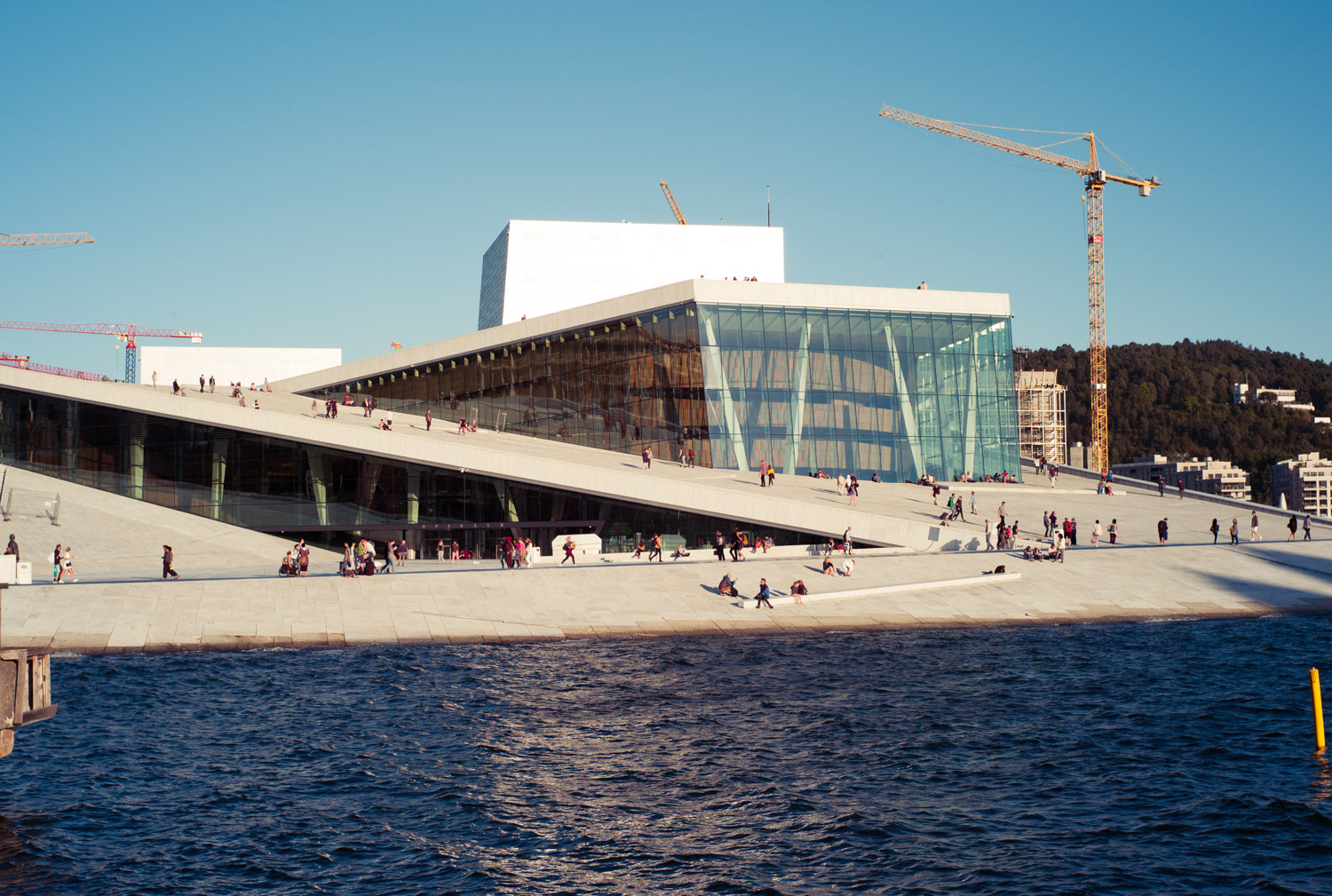
[Shot with Voigtlander 35mm Nokton f1.4. Color and contrast adjusted in Lightroom]
The camera I'm going to review today--the Leica M8.2--was released in 2008, nearly 10 years ago. It is only a minor improvement over the M8 from 2006, and uses the same sensor and processor. If it was a film camera, that would make it relatively young, but in digital terms, it is a dinosaur. 2008 is the same year that Canon released the 5D mark2 and Panasonic released the G1. At the time of release, the Leica M8.2 retailed for $5,995. These days it or its M8 brother can be had on the used market for around $1,000. That puts it in the price range of advanced amateur cameras like APS-C DSLRs or last generation full frame DSLRs like the Canon 6D or the mirrorless full frame Sony A7. While it definitely has trouble keeping up with those cameras in terms of features, megapixels, and ISO performance, it surprisingly holds its own in terms of image quality and user experience. Let's take a closer look.
Features
Plain and simple, there are none. To some, like me, this is actually a feature. The Leica M8.2 does one thing and one thing only, it takes photos (and it takes photos well). That's it. Nothing else. Because of this, there are no extraneous buttons, dials, knobs, etc. There are only the controls required to take photos and set your settings. There are two menus: a shooting menu and a settings menu. Both are easy to navigate with no confusing options and no pages to scroll through. There are physical controls for shutter speed and aperture (on the lens), and a screen and a few buttons on the back. You have aperture priority mode and manual mode. Focus is always manual. That's it, and that's awesome.
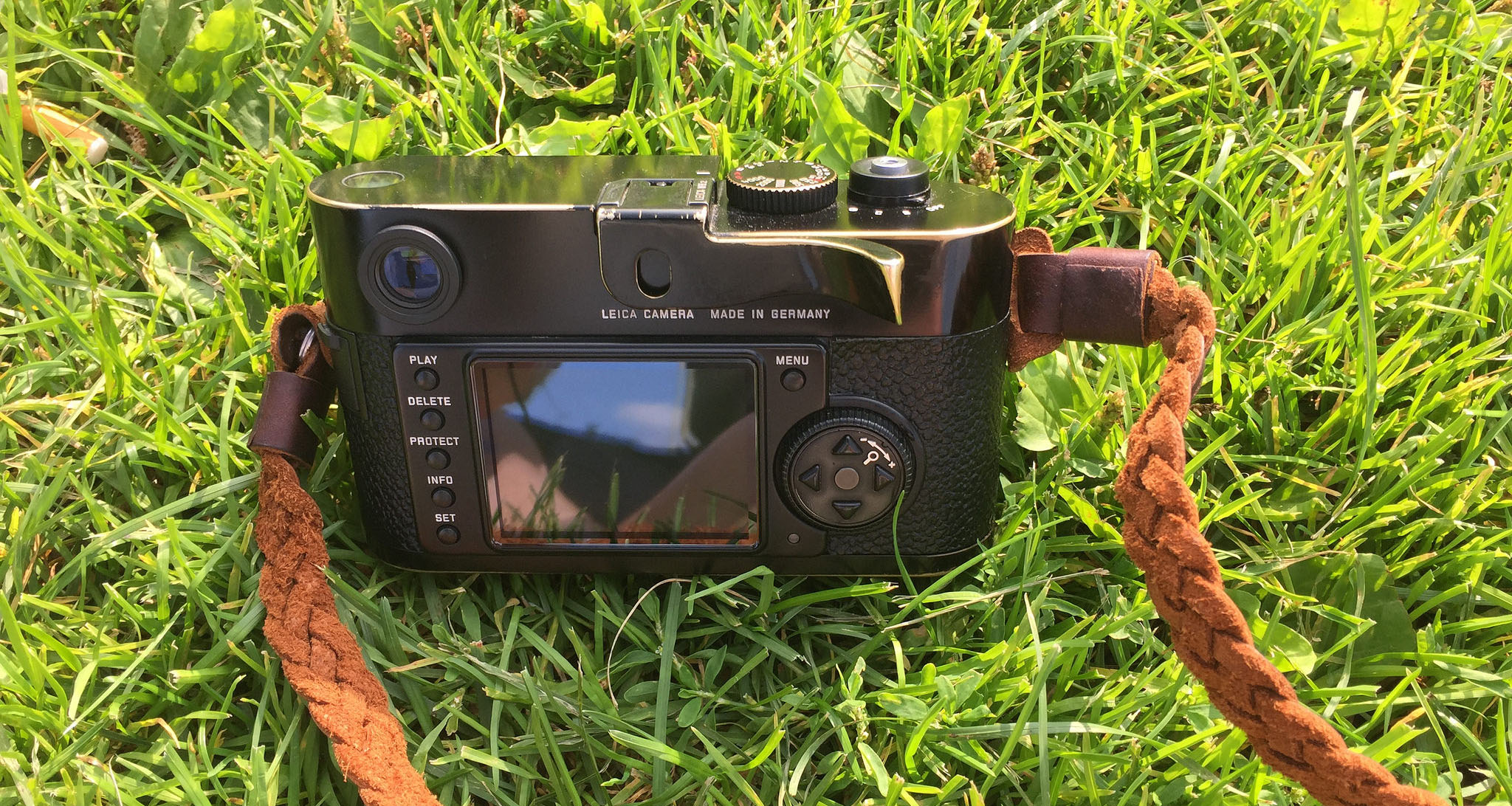
Aesthetics and User Experience
This is the main reason I initially became interested in the Leica M range of cameras. My Sony A7ii left me feeling disconnected from my photography. The process of shooting with the A7 is either too automated or too frustrating when attempting manual controls. I was tired of the infinite menus, the missed autofocus, the imprecise focus peaking, and the awful battery life.
Enter the Leica M8.2. As far as shooting experience goes, this camera was just what the doctor ordered. It's as close to shooting film as I can imagine a digital shooting experience could ever be. It is essentially, a Leica M film camera with a digital sensor slapped in where the film should go and a screen glued on the back. This concept of digitizing a film camera was one of my dreams when I first began shooting film in 2007 with my old Zorki 4. The allure of this style still appeals to me today.
Viewfinder
The viewfinder on the M8.2 is one of my favorite things about it. It's brighter and more clear than the viewfinder on my M4-P or any of my film SLRs. The frame lines are also very bright and for those who are not used to the Leica or rangefinder style of shooting, you'll be pleasantly surprised with how easy it is to achieve accurate manual focus every time. The viewfinder also displays the shutter speed in red digital clock style. Very retro!
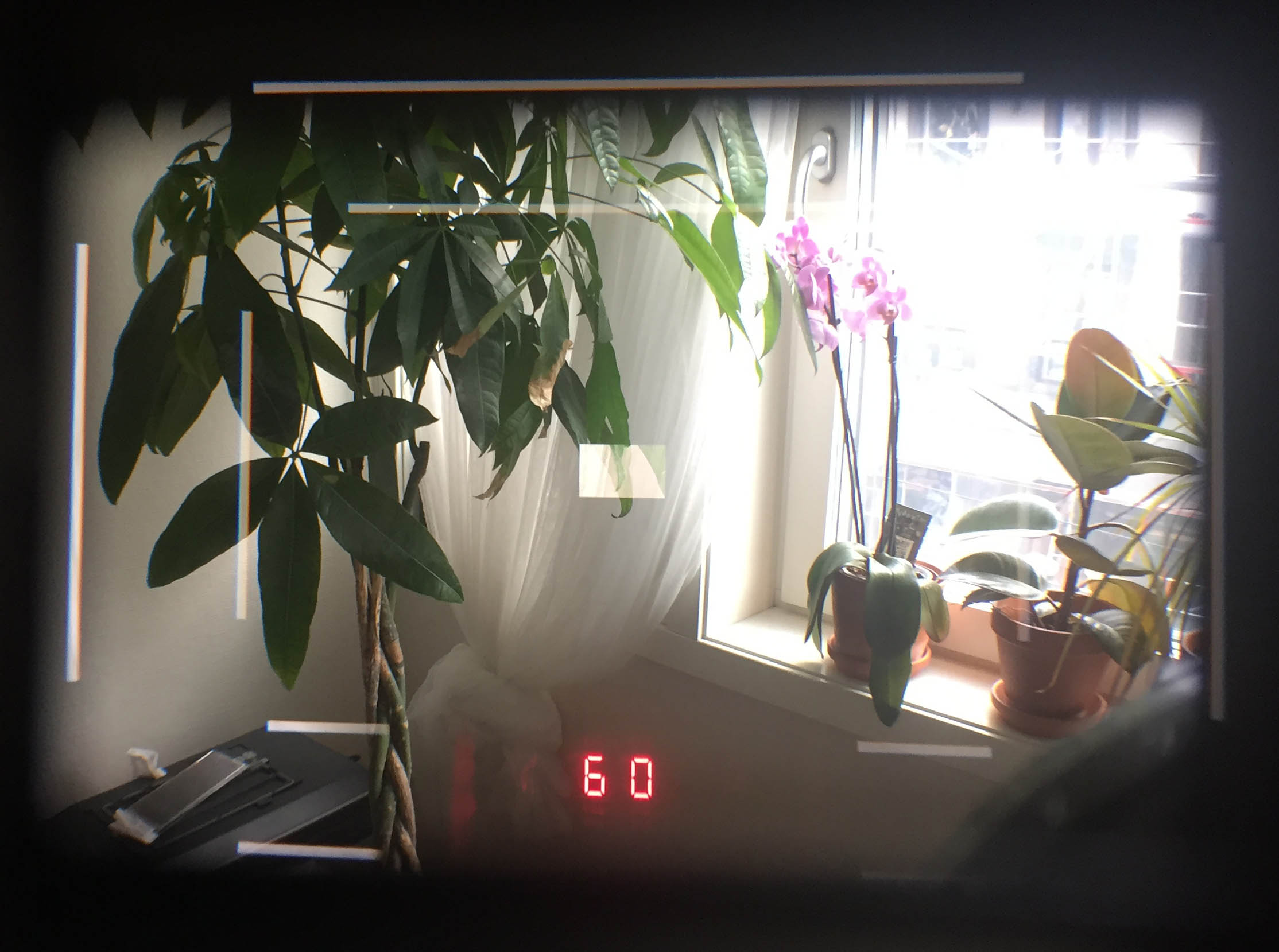
[iPhone photo through the viewfinder doesn't do it justice, but gives some idea of how it looks.]
Body
The body is a bit chunkier than the film Leica Ms. I always forget this when shooting the M8.2, but as soon as I pick up the M4-P, I immediately notice the difference. The M4-P feels like the same camera after a diet. However when you look at the digital cameras it was competing with when it was released, it was easily the thinnest and lightest of the bunch. Even today, it's about the same size and weight as my A7ii.
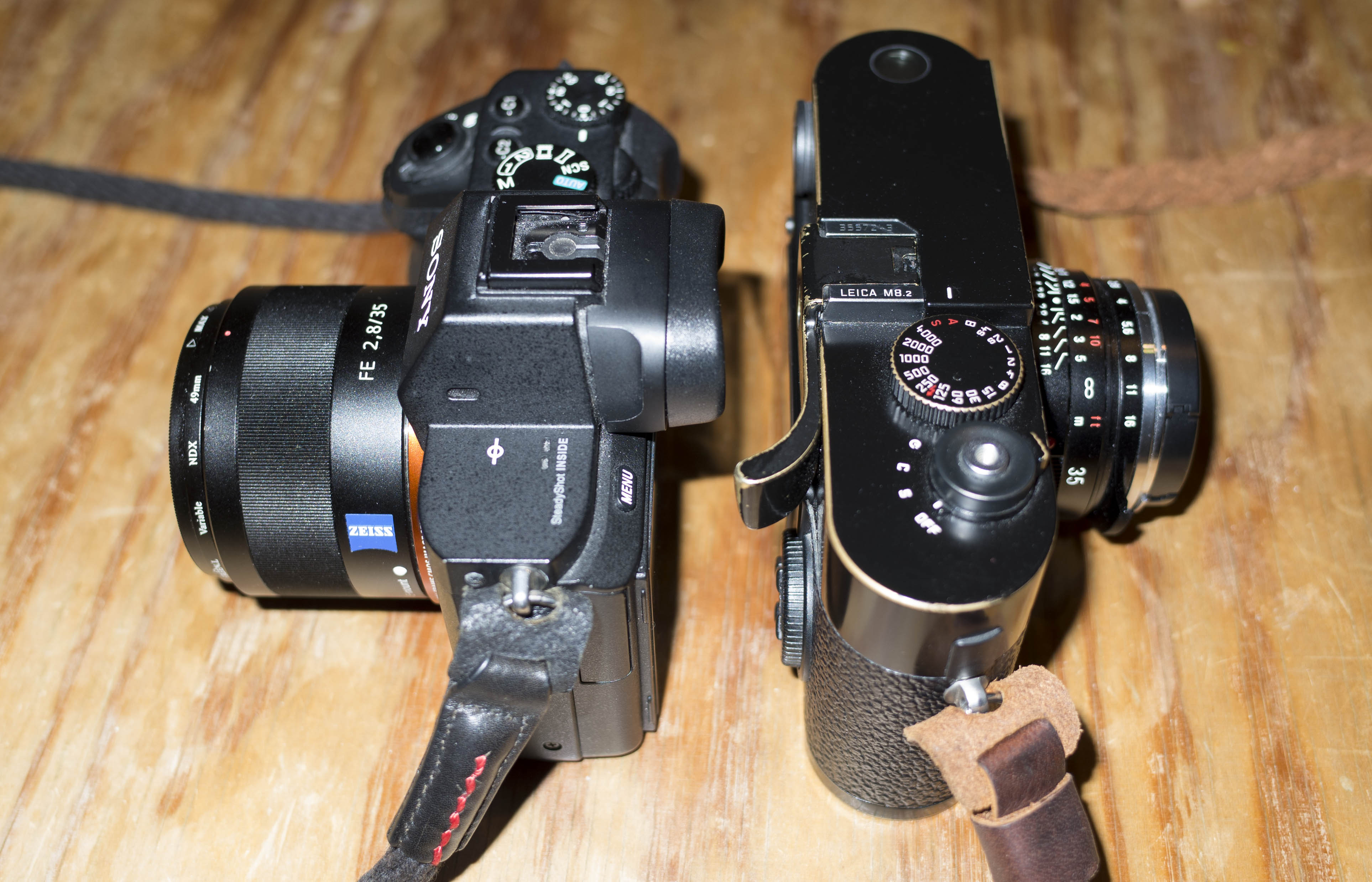
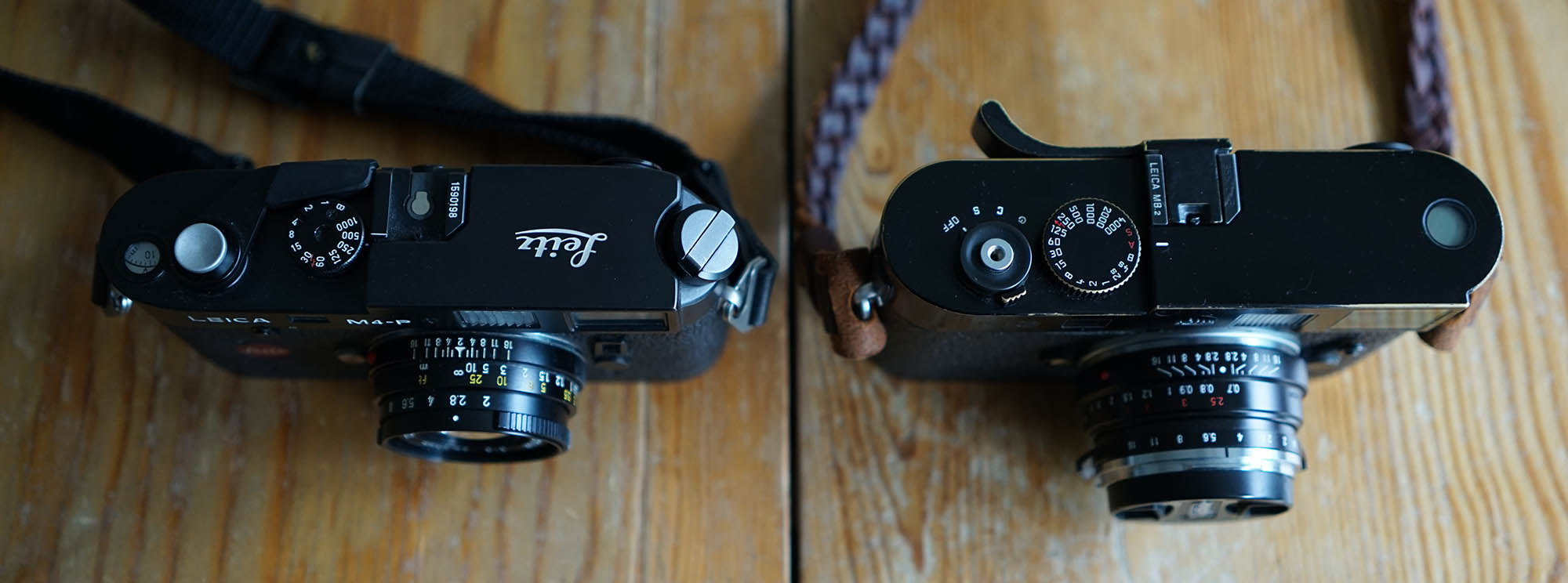
The black M8.2 has a dark Leica logo which is a plus and the gets the nice brassing look as the paint wears, just like the old film bodies. The reason for that being it's actually made of brass. No plastic bits here.
On the downside, the body can be a bit slippery without an added grip. The one I use is a thumbs up grip that came along when I got the camera, and it's great as long as you don't need to use a flash (it occupies the hotshoe). You can also get a full-on hand grip, but unfortunately the prices of Leica accessories even for old cameras is still a bit high for what you get.
Another odd note, the SD card and battery are only accessible by removing the bottom plate. This is made to imitate the bottom plate of film Leicas, but on a digital camera it feels a bit odd to have to do this. It doesn't bother me, but feels unnecessary.
Shutter
Normally not something I would write about or even think about, however, Leica film cameras are renowned for their nearly silent cloth shutters. Street photographers often flock to Leica M cameras for the ability to shoot without being noticed. This feature is gone from the digital Leicas.
Having poured over numerous reviews of the Leica M8 and M8.2, the shutter was something that came up as a regular point of complaint. In fact, the shutter is one of the main differences between the M8 and the M8.2. I can't speak for the M8 as I haven't had the chance to use one, but I actually find the shutter sound on the M8.2 to be very pleasant. Similar, in a way, to point and shoot film cameras of the 90's. Click - whirr! But still, maybe not everyone's cup of tea.
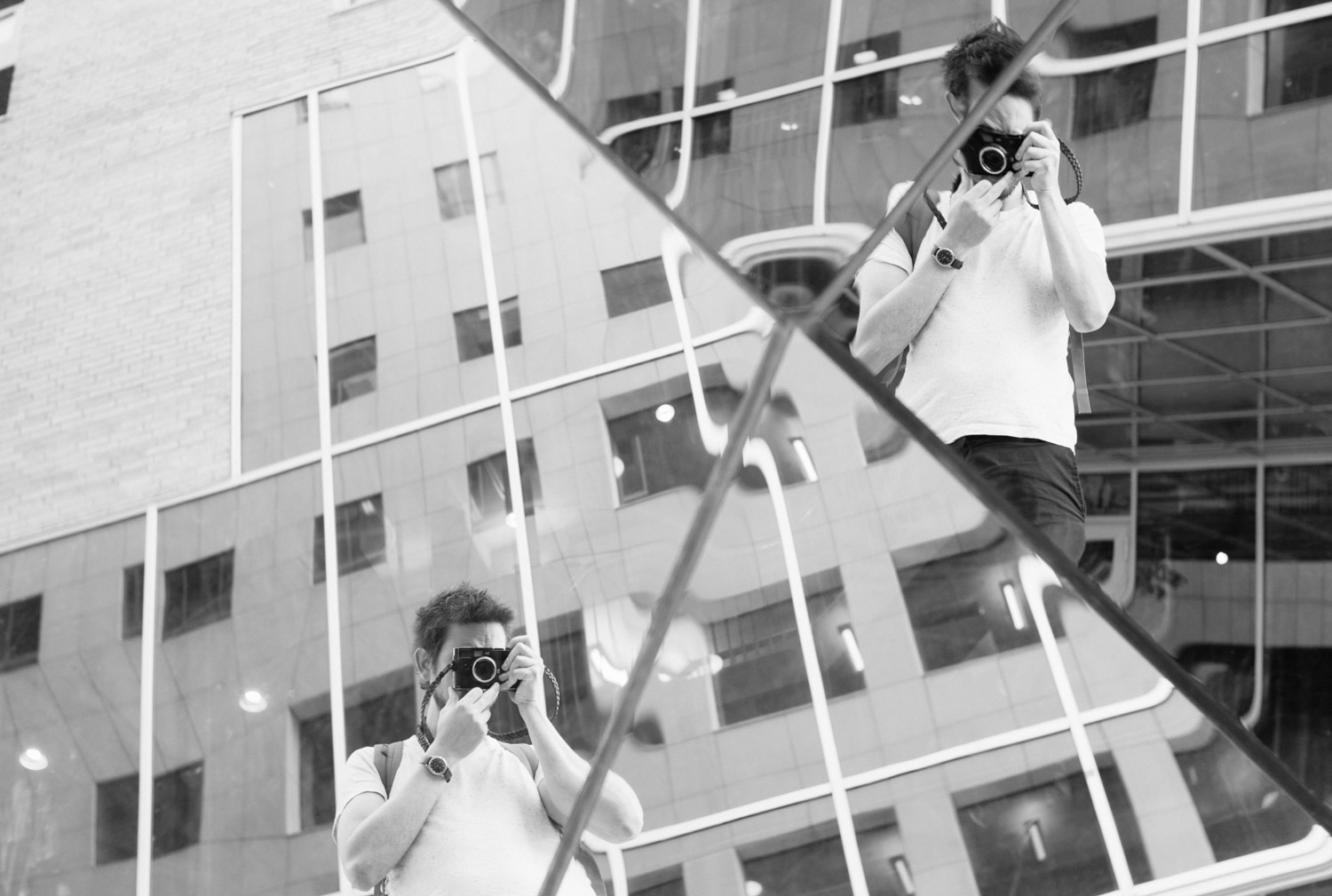
[Shot with Voigtlander 35mm Nokton f1.4. RAW converted to black and white in Lightroom]
Overall User Experience
Overall the Leica M8.2 is a pleasure to hold and to use. It won't weigh you down and is designed to totally get out of your way and let you shoot. The simplicity that draws fans to Leica film cameras is retained in the digital realm and in some ways is even improved upon. Coming from modern DSLRs and Mirrorless cameras, shooting a Leica M8.2 is almost like meditation.
If you are the type of photographer who often shoots with manual focus and manual settings and are frustrated by how difficult most digital cameras make it to do this, the Leica M8.2 was created for you.
If you are the type of photographer who puts your camera into P-mode and never sets another thing, steer clear!
Maybe I should rename this review Leica M8 - A Digital Camera Review by a Hipster Who's Tired of Digital Cameras ;)
Image Quality
This is the aspect of the camera that is most affected by the passing years. It is what will draw some people to the camera and, at the same time, will ultimately turn many people off to it. I'll first describe my impressions of the images this camera creates. Then I will address the three main weak points of the 12 year old sensor that produces these images.
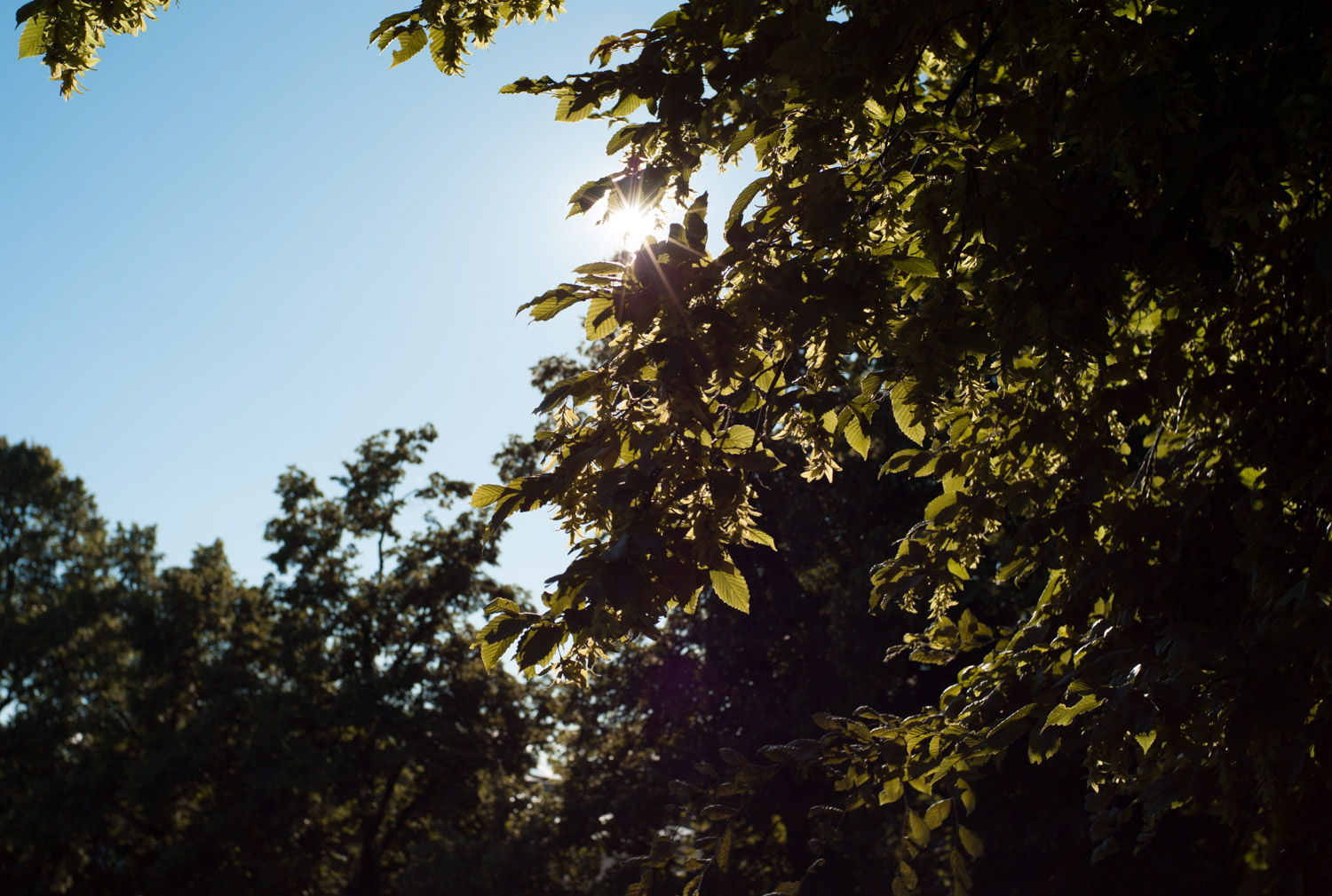
First Impression
I have been shooting the Leica M8.2 for about a month straight now as my main daily use camera. I've taken it on a couple of weekend trips as well as some walkabouts around Oslo.
From the first images I've taken with the M8.2, I was struck by the clarity, sharpness, and color rendition this camera is capable of. I'll preface the rest of this section with a note on the lenses I've shot with and settings I've chosen. The photos in this review are taken with the Voigtlander 35mm f1.4 Nokton Single Coated lens, the Voigtlander 50mm f1.5 Nokton, and the Minolta M-Rokkor 40mm f2. I've shot almost exclusively in RAW which is hard to argue against as the raw images are merely 10mb each. Almost all the photos are shot at 160 ISO.
The Good
Crisp, sharp images
The Leica M8 was one of the earliest interchangeable lens cameras to omit the optical low pass filter, also called anti-aliasing filter. What this equates to in practical terms is a sharper and more crisp image at the risk that you will suffer aliasing and moire. What the anti-aliasing filter essentially does is purposely blur the image a tiny bit. More and more cameras these days are removing the AA filters because photographers tend to prefer a sharper image and don't mind risking the moire. The lack of AA filter is what separates the Canon 5DsR from the 5Ds and one of the factors separating the Sony A7r from the plain A7.
When I look at my photos taken on the Sony A7ii, they look sharp, but as soon as it put it next to photos shot on the M8.2 they suddenly look fuzzier. Especially when comparing photos taken with the same Voigtlander lens.
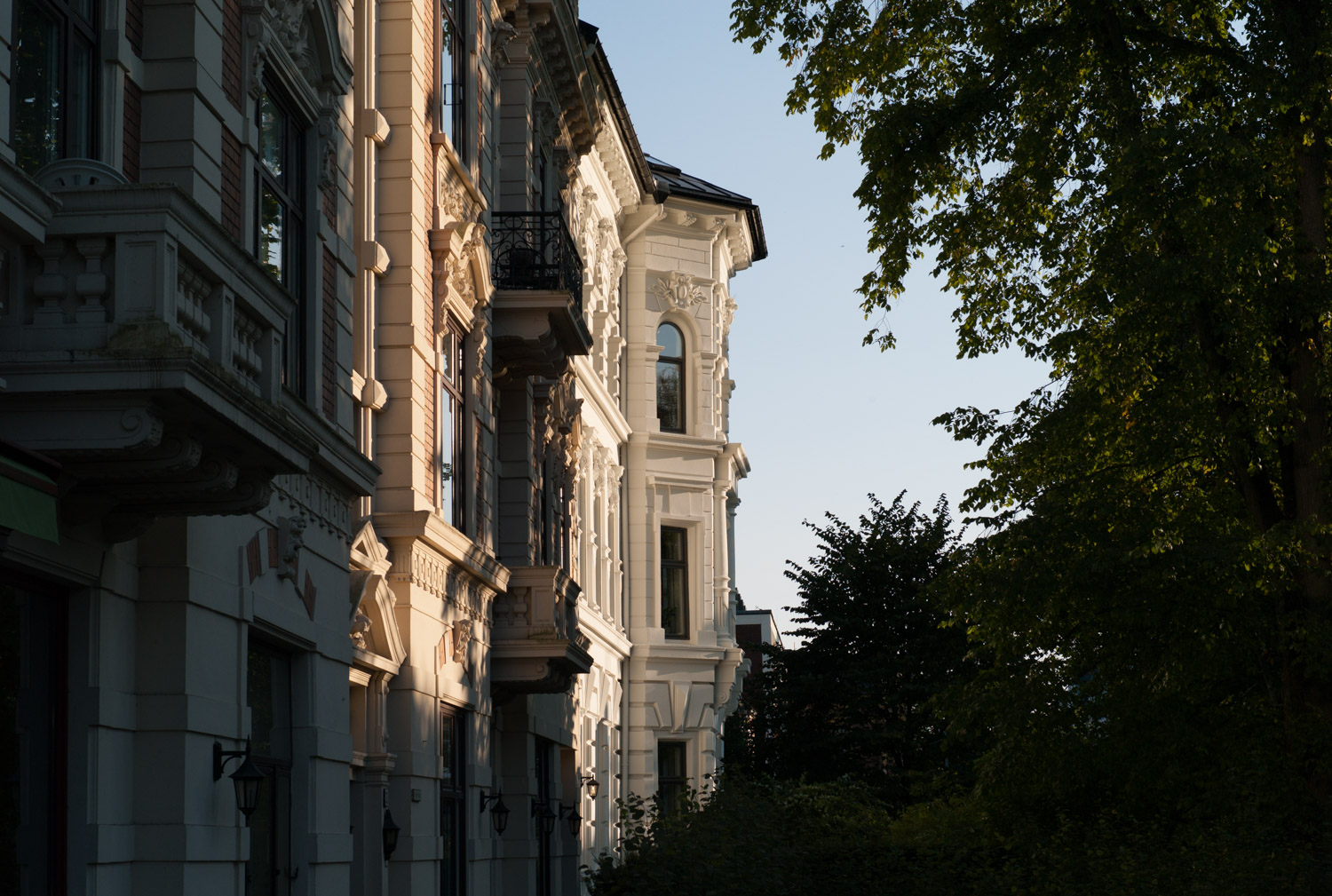
[Shot with Voigtlander 50mm Nokton f1.5.]
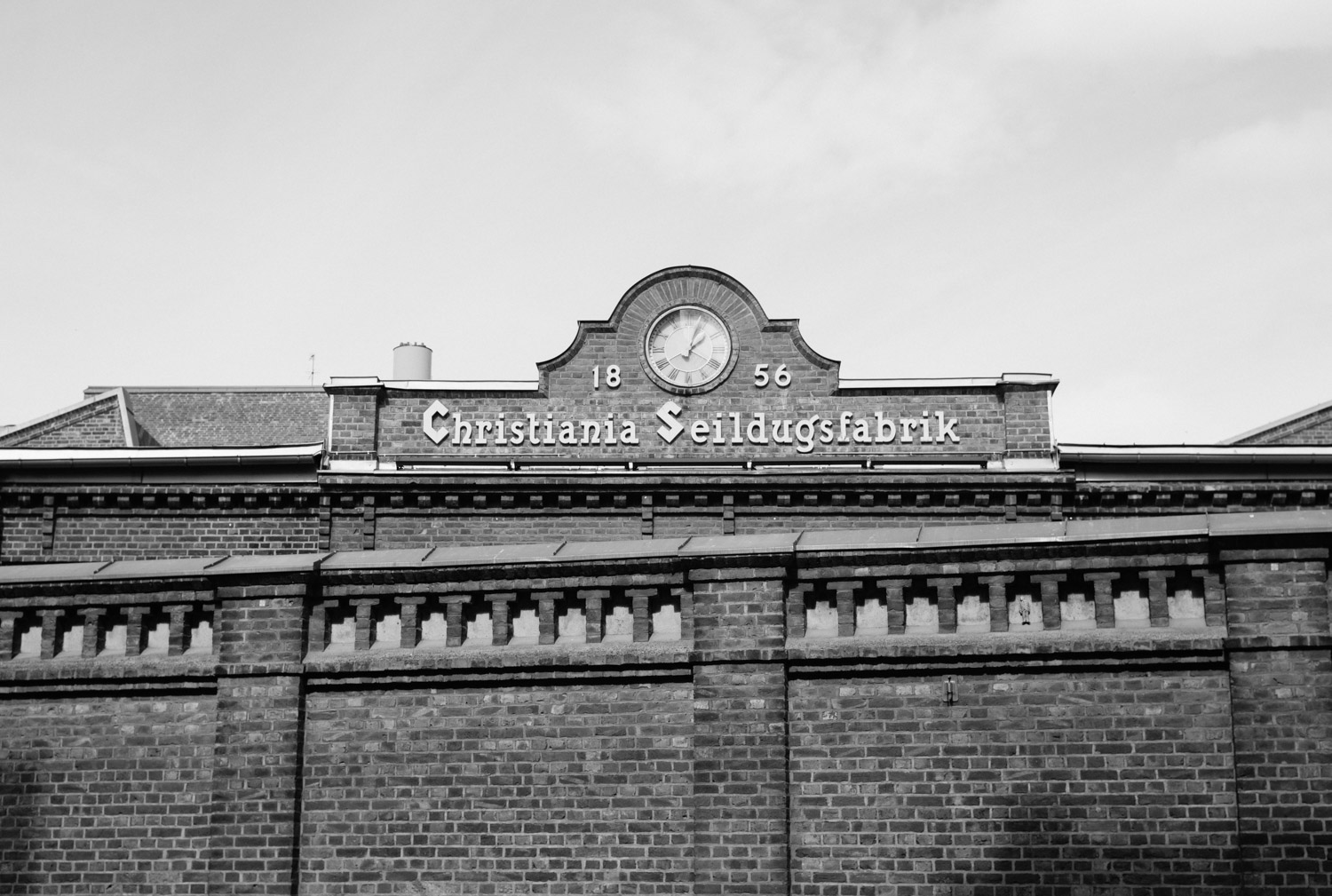
[Shot with Minolta M-Rokkor 40mm f2. RAW converted to black and white in Lightroom]

[Shot with Voigtlander 35mm Nokton f1.4. Color and contrast adjusted in Lightroom]
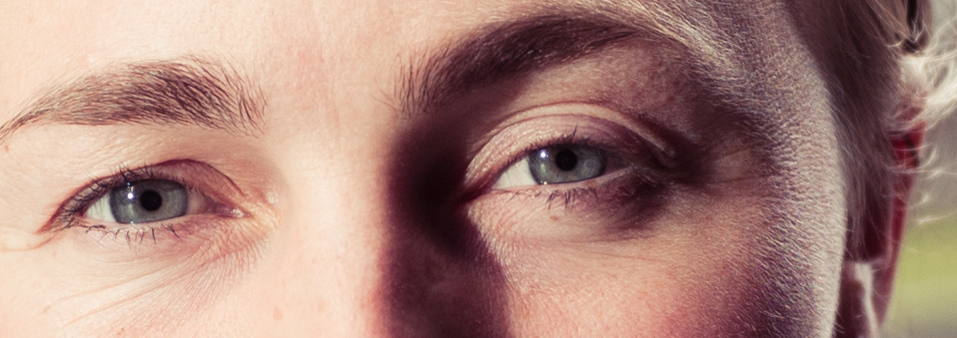
[Over 100% crop!]
Color Rendition
The Kodak CCD sensors that are found in the Leica M8, M8.2, and M9 are renowned for their pleasing colors. Many photographers liken the colors from the Leica M8/M9 to being the closest to film that digital has gotten. What this means to someone like me in today's world is less time required in Photoshop or Lightroom to get an image how I want it. For me this is a huge plus and a step towards bringing the digital shooting experience closer to the film shooting experience, although I admit I still don't find the untouched images as pleasant as film and am often tempted to do some tweaking in post. The Leica look is pleasing, but to my eyes, still looks like digital when taken straight from the camera. Still, the amount I have to tweak is less than I'm used to to create a look I'm happy with. Of course, all of this comes down to personal preferences and every major brand has fans of their individual color profiles.
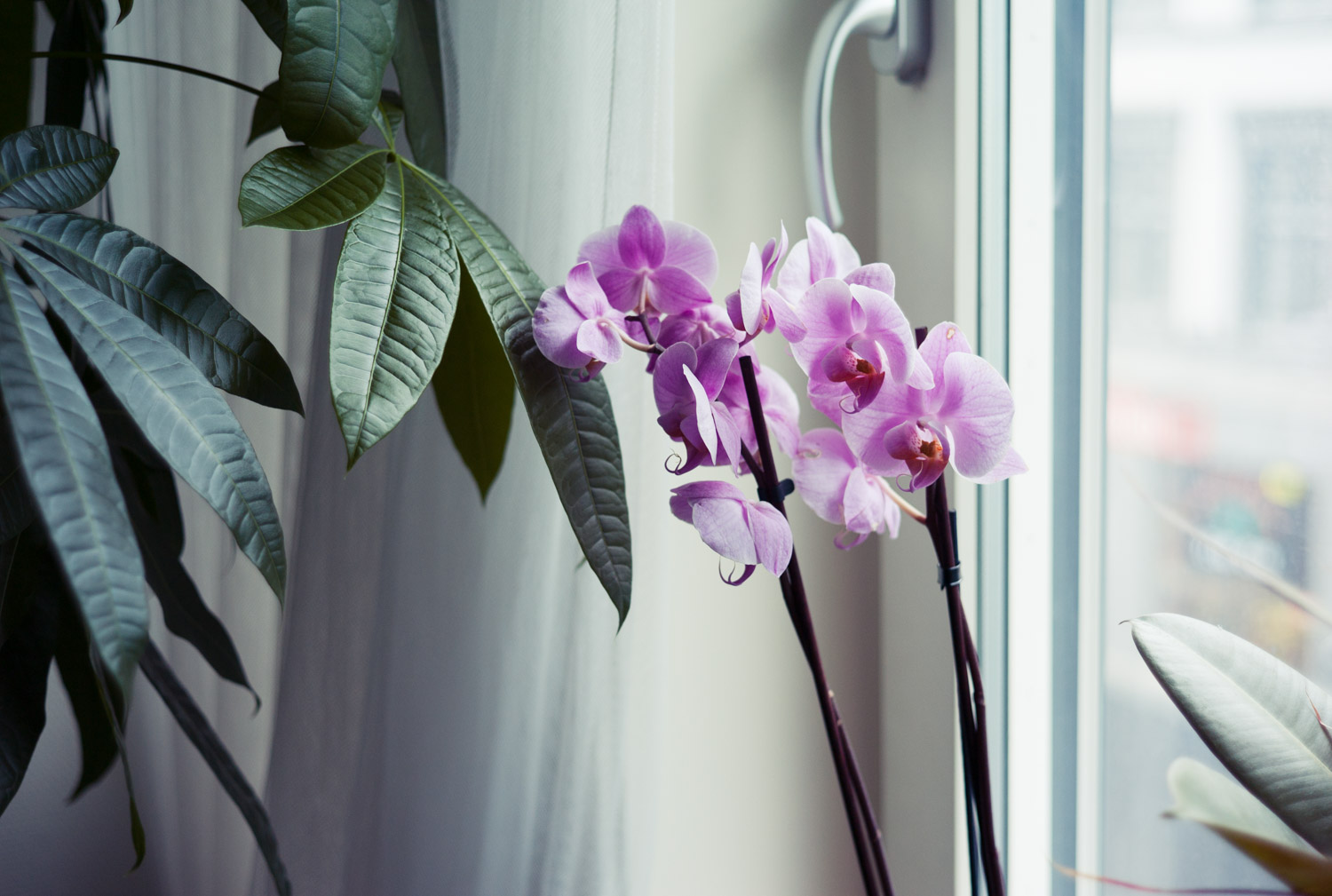
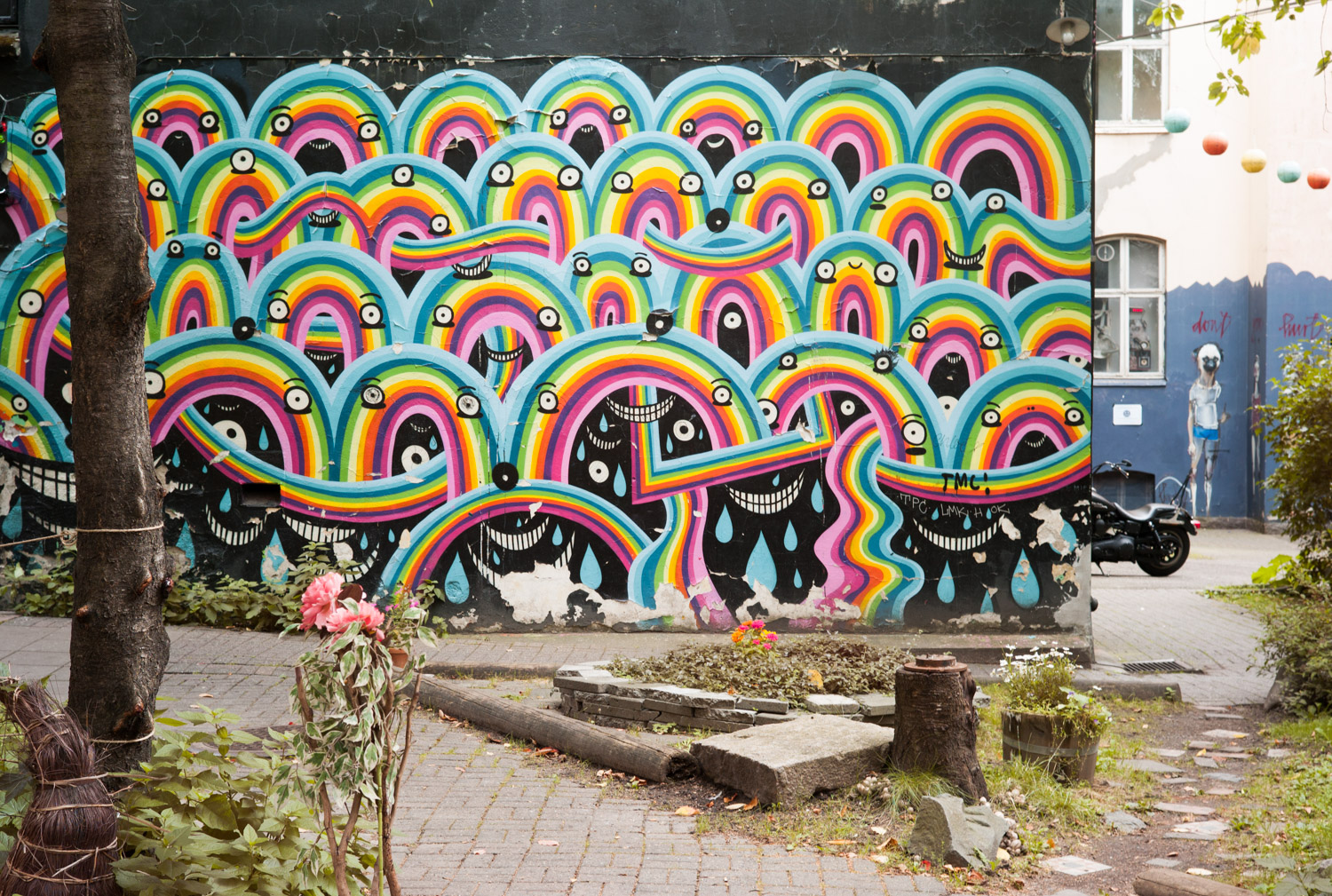

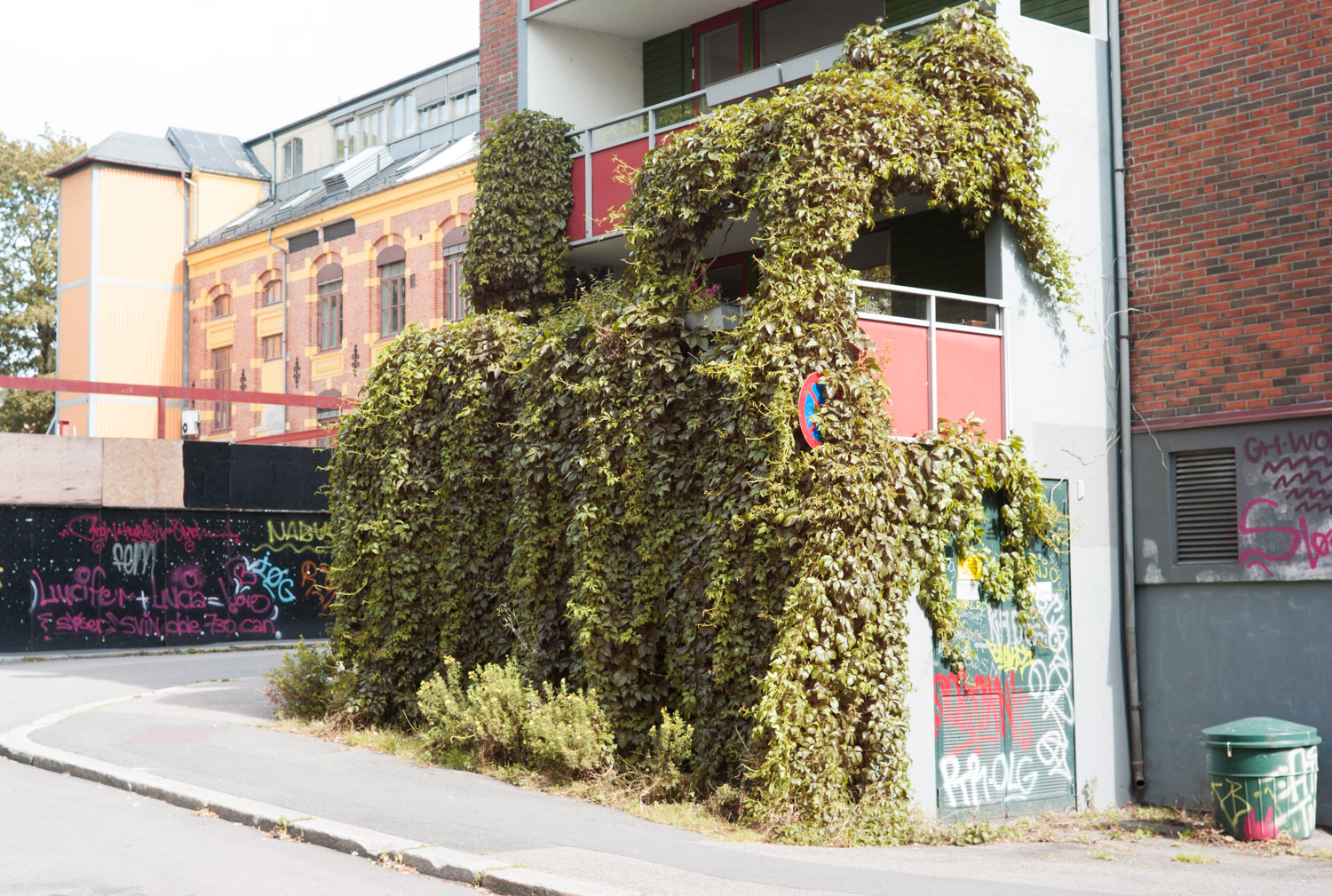
The CCD sensors were a hit with many Leica fans and there was even a point where Leica shooters, disappointed with the CMOS sensors of the newer Leica M typ240 (despite its much improved high ISO performance), created a petition to Leica to return to CCD sensors. Leica, of course, did not do that and thus the rather unique CCD look is part of what helps these older Leica Ms remain relevant today. This all comes with a huge caveat for the M8 and M8.2 however, in the form of IR sensitivity. This I'll discuss a bit further down.
Grain performance at base ISO
At ISO 160, I test you to find a speck of grain in a RAW image from the Leica M8.2. Maybe I'm only impressed by this because I usually only shoot jpgs in the situations I've been using the M8.2 so far, in other words personal stuff. I've only shot a couple jpegs with the M8.2 and it was accidental, and not as impressive as the RAW images. I have yet to put the M8.2 through its paces in an actual photo shoot where I would normally shoot RAW. Soon hopefully. In any case, some very clean imagery is possible with this camera. In fact, I was tempted to turn up the ISO to introduce a bit of grain to add character. 320 was fine, but after that it was a slippery slope. More on that later.
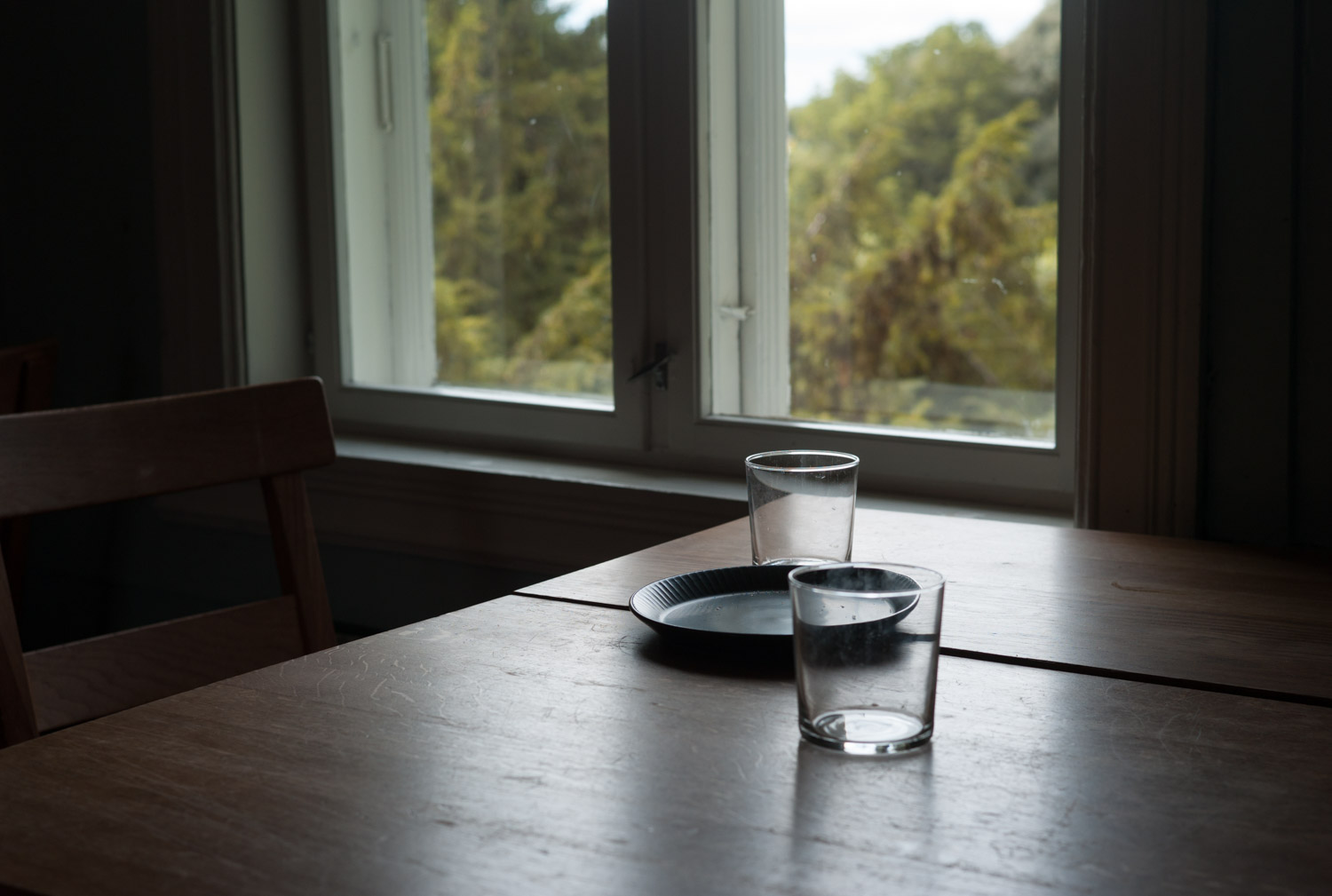
[Shot with Minolta M-Rokkor 40mm f2. RAW to JPEG direct conversion. Color and contrast straight out of camera.]
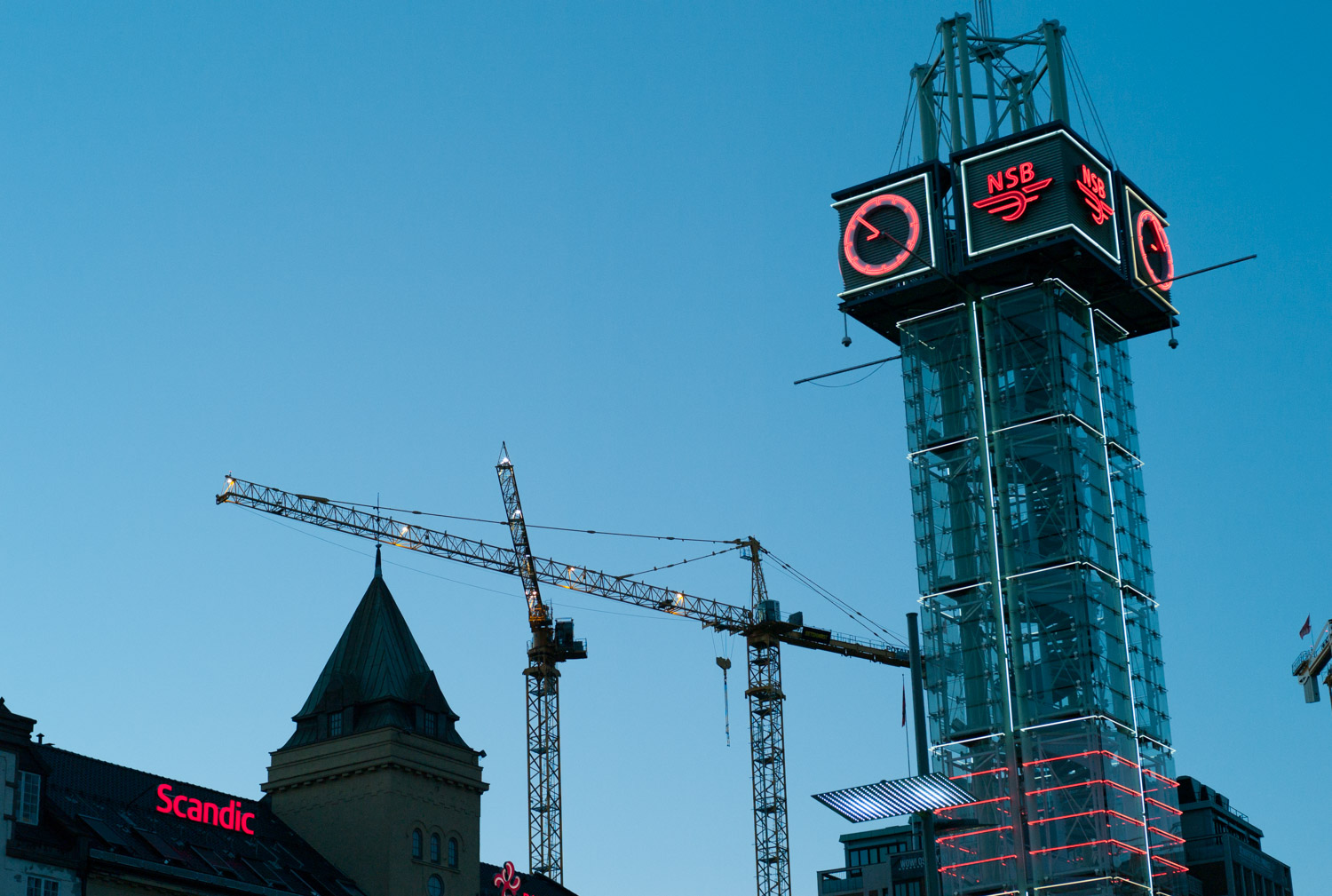
[ISO 640. Highlights are fine. Shadows are a bit icky.]
The Bad
10MP
There's a lot of back and forth on the net about just how many megapixels is enough. There's one well known reviewer in particular who marks down cameras that don't allow you to turn down your megapixels, for example shoot 6MP images on a 24MP sensor. Strange stuff. In my experience, having a lot of megapixels to work with is definitely a good thing. Especially when it comes to cropping and editing, more megapixels just gives you more flexibility.
When it comes to actually using the images, for what I need, 10MP can be sufficient most of the time. Going back to the main reason I bought this camera, i.e. getting a digital shooting experience to be like shooting film, 10MP is about the high end of the resolution I'll get when I have 35mm negatives scanned at the photo lab anyway. As far as the scans go, I've never though so much about being limited by this size, although it is always comforting to know that I can dig up the negative and get a better scan or print as needed. So far, the number of times I've had to do that is zero.
Besides cropping, the only real disadvantage I can see to having 10MP is if you are an art photographer or a commercial photographer where you'll need to have images that can be printed at large sizes. Maybe one day I'd be interested in printing very large, and then I'll chose a different tool for that job. But when it comes to daily shooting and portfolio building, I really don't see 10MP as being any sort of hindrance. Knowing you'll have a hard time cropping only forces you to slow down your shooting process and take your time getting the shot. However, if it came down to shooting a professional job, I'd be lying if I said I wouldn't be hesitant to choose a 10MP camera in 2017, though I've seen one Youtuber who still swears by this camera for wedding photography and gets some really fantastic results.
1.3x crop
The Leica M8.2 is NOT a fullframe camera. I'm not certain why Leica decided to put in a crop sensor on what was a $6,000 camera released the same year as the Canon 5D mark2. That just feels a bit weak to me. In any case, the CCD sensor in the M8.2 is an APS-H type, the only one I've ever heard of. This gives a crop ratio of 1.3x as opposed to the 1.6x of the APS-C sensors found in most non-fullframe DSLRs today. This point bothers me more on paper than in practice. Through a bit of trickery in the viewfinder, I find that I almost don't notice the crop factor at all. Even if I shoot a bit on the M4-P and swap the same lens to the M8.2. When shooting 35mm and 50mm focal length lenses, they come out to 45.5mm and 65mm respectively. It makes a difference for sure, but not one that has bothered me at all.
Terrible high ISO performance
While the ISO performance at the base ISO of 160 is exceptional, the same cannot be said as the ISO is cranked up. If I were to draw a graph of the performance vs ISO setting, it would look like a steep cliff. For starters, there are only five ISO options at all: 160, 320, 640, 1250, and 2500. To my eyes, ISOs 160 and 320 are absolutely fine. Better than fine, really. Then ISO 640 is usable, but not great. After that, things get ugly fast. The thing is, I really don't mind high amounts of noise in photos. It can even be pleasant when the grain pattern is nice. I remember my old Olympus Pen E-P2 was quite grainy at 800 and 1250 ISOs, but the grain was just lovely. This is not the case with the Leica M8.2. The grain that appears on the "high" ISO range is really quite awful. It takes your multi-thousand dollar camera and puts it on the same level as the junky webcam sitting atop your CRT computer monitor.
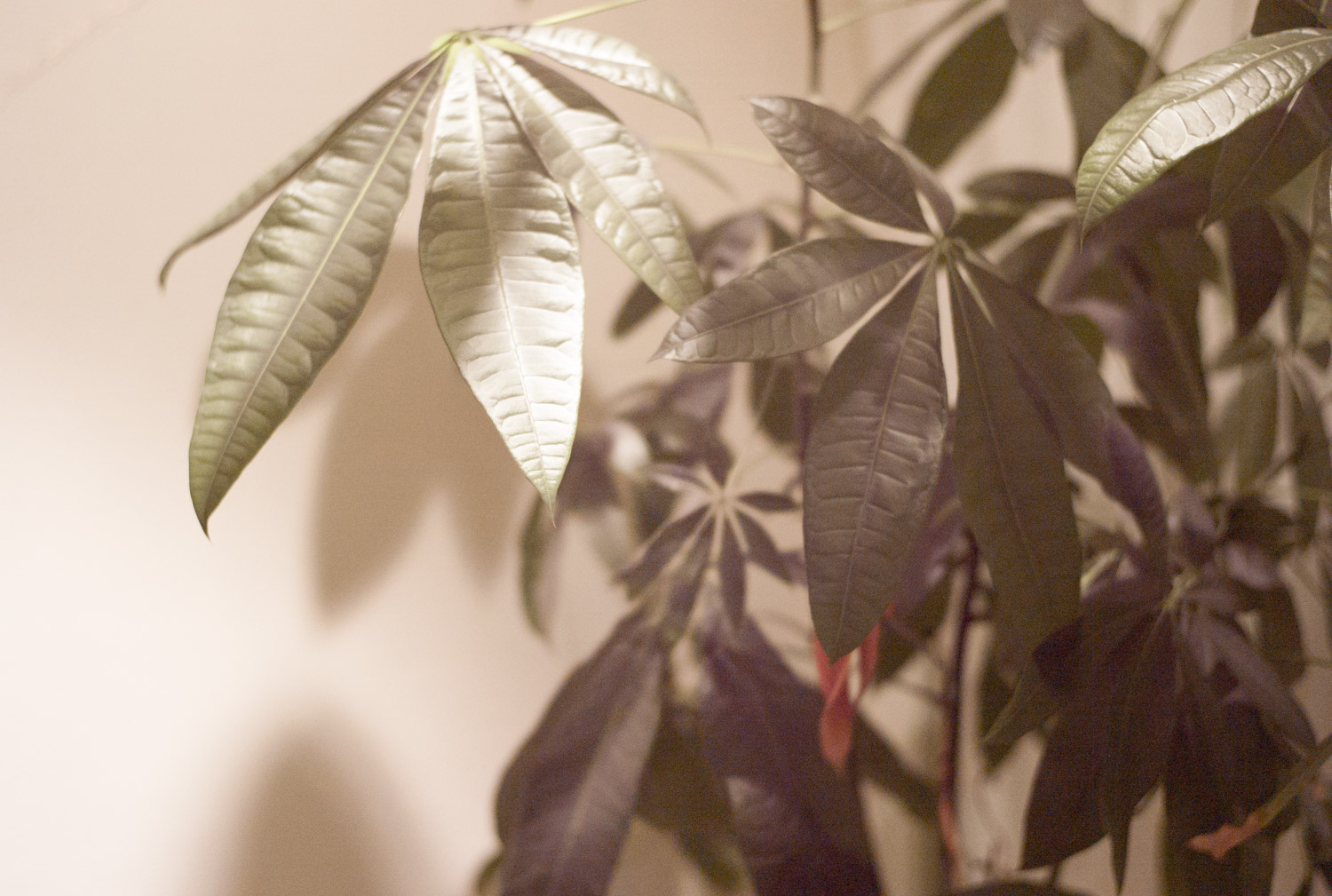
[2500 ISO straight out of camera.]
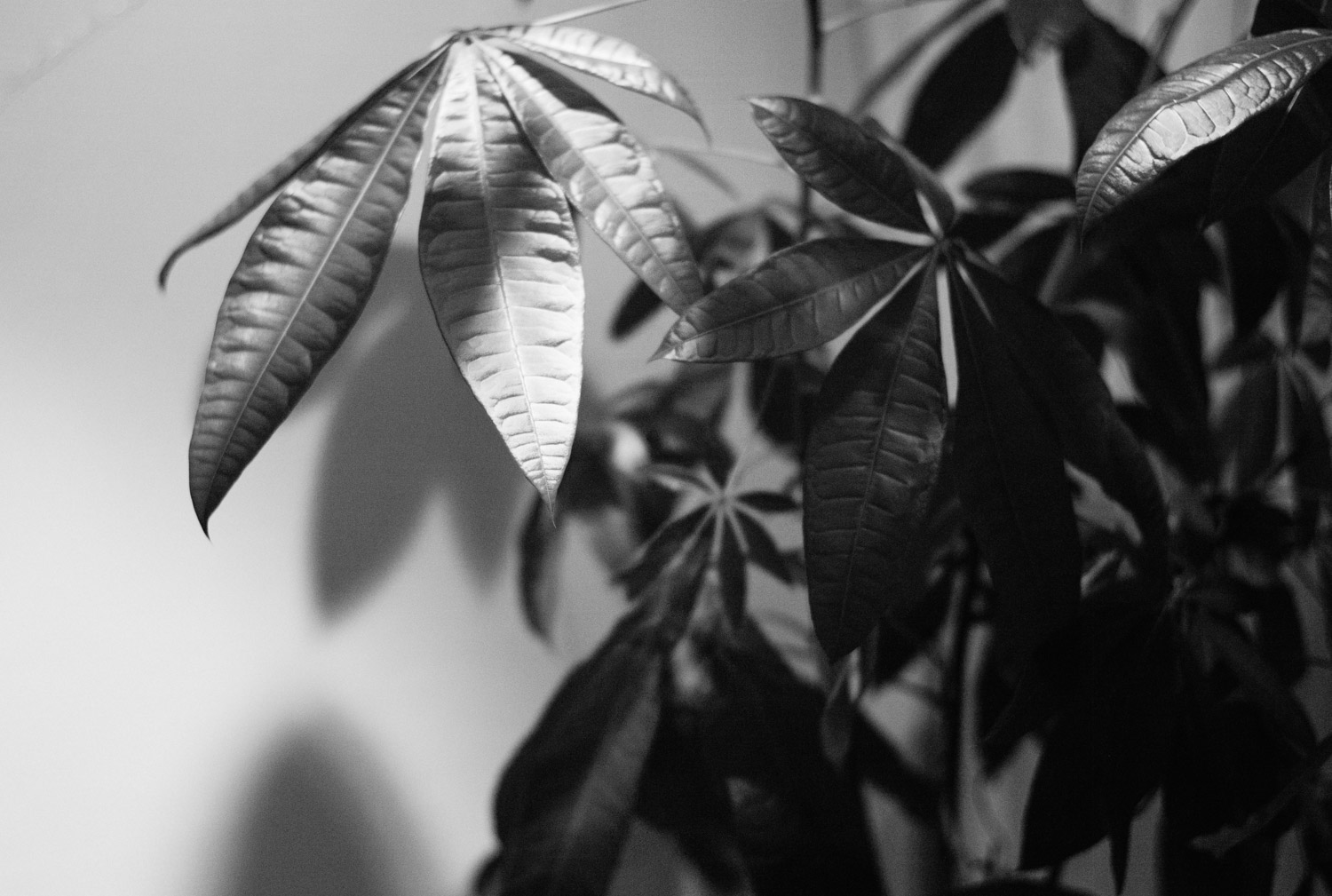
[Slightly more pleasant processed into contrasty black and white.]
My solution to this problem is simple and hearkens back to my original reason for buying this camera yet again. Treat the ISO as if it were film. When I shoot film, I use 100, 160, and 200 speed regularly. Rarely I'll shoot 400 or 800 speed film. But here's the thing, when you have a roll of 160 film in your camera and the sun goes down, you don't throw out that roll and slap in an 800 speed film. You just put on a flash or get yourself a tripod or stabilize the camera on something to take your photo. Treat the Leica M8.2 like a film camera and it will be your friend.
IR sensitivity -- lack of filter availability
One of the downfalls of the CCD sensor employed by the Leica M8 and M8.2 is that it is sensitive to infrared light. This is light that is normally invisible to the human eye and can cause a few problems with photos taken using these cameras without the proper IR cut filters. In practical terms, I find that it is most noticeable on black fabrics (especially when they are slightly reflective) and also when shooting plants and vegetation in certain light conditions. Mainly, the effect causes discoloration--black fabrics appear purple, green plants can have a tinge of magenta--but it can also affect the focus as the focal point of infrared light is different than that of visible light.
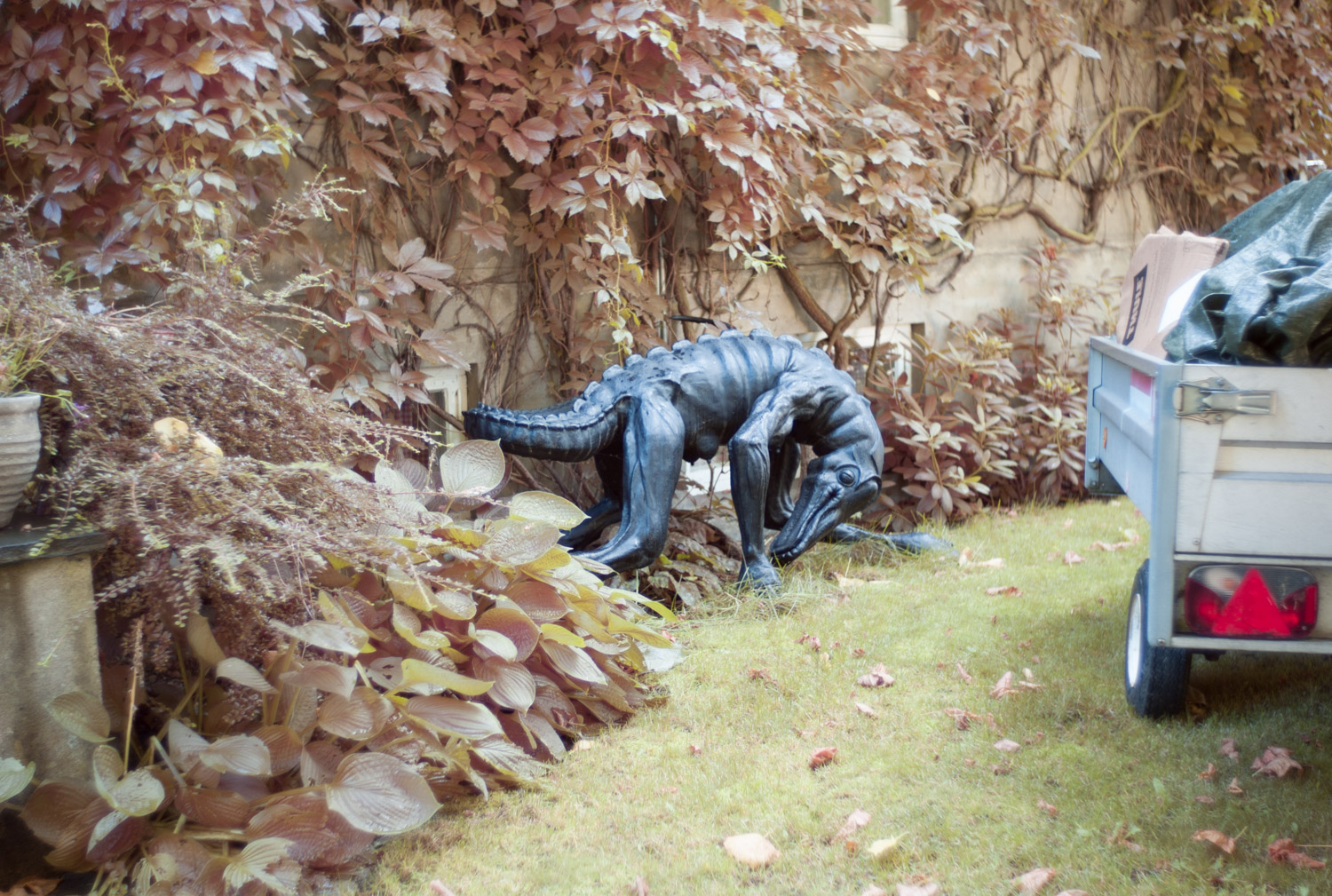
[These leaves should be green.]
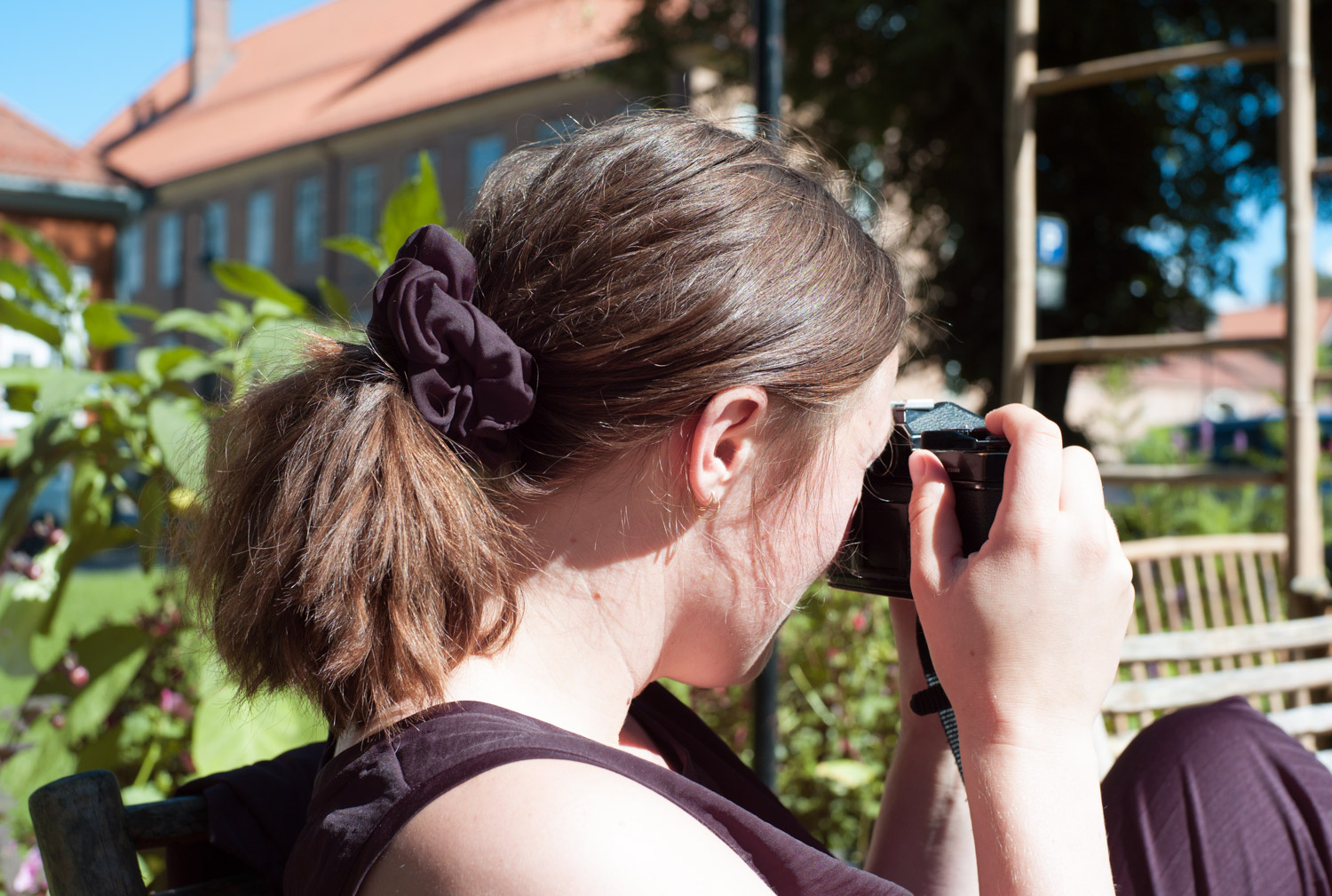
[Her clothing and hair elastic are actually the same color as her camera.]
This IR sensitivity can effectively be canceled using an IR cut filter and when Leica originally sold these cameras they came with 2 free filters of the typical 39mm diameter. Unfortunately for modern photographers, there hasn't been much need for these filters ever since most cameras have switched over to CMOS sensors. Even the CCD sensor of the Leica M9 had a built in IR filter. The problem this causes for M8 shooters is that the filters have become pretty hard to come by. Especially high quality ones. I checked every photo store here in Oslo and none of them carried IR cut filters. They could be ordered in, but the prices were over $100 per filter. On ebay there are slim pickings as well so I ended up getting one cheap Chinese filter and then caved and ordered a used B+W filter from ebay for around $75. More than a slight irritation when this money could be much better spent towards lenses instead. The cheap $25 dollar no-name filter is okay in the fact that it cuts the IR light effectively, but the downside is that it also tints the image with a bluish/cyan tint, especially when used indoors.
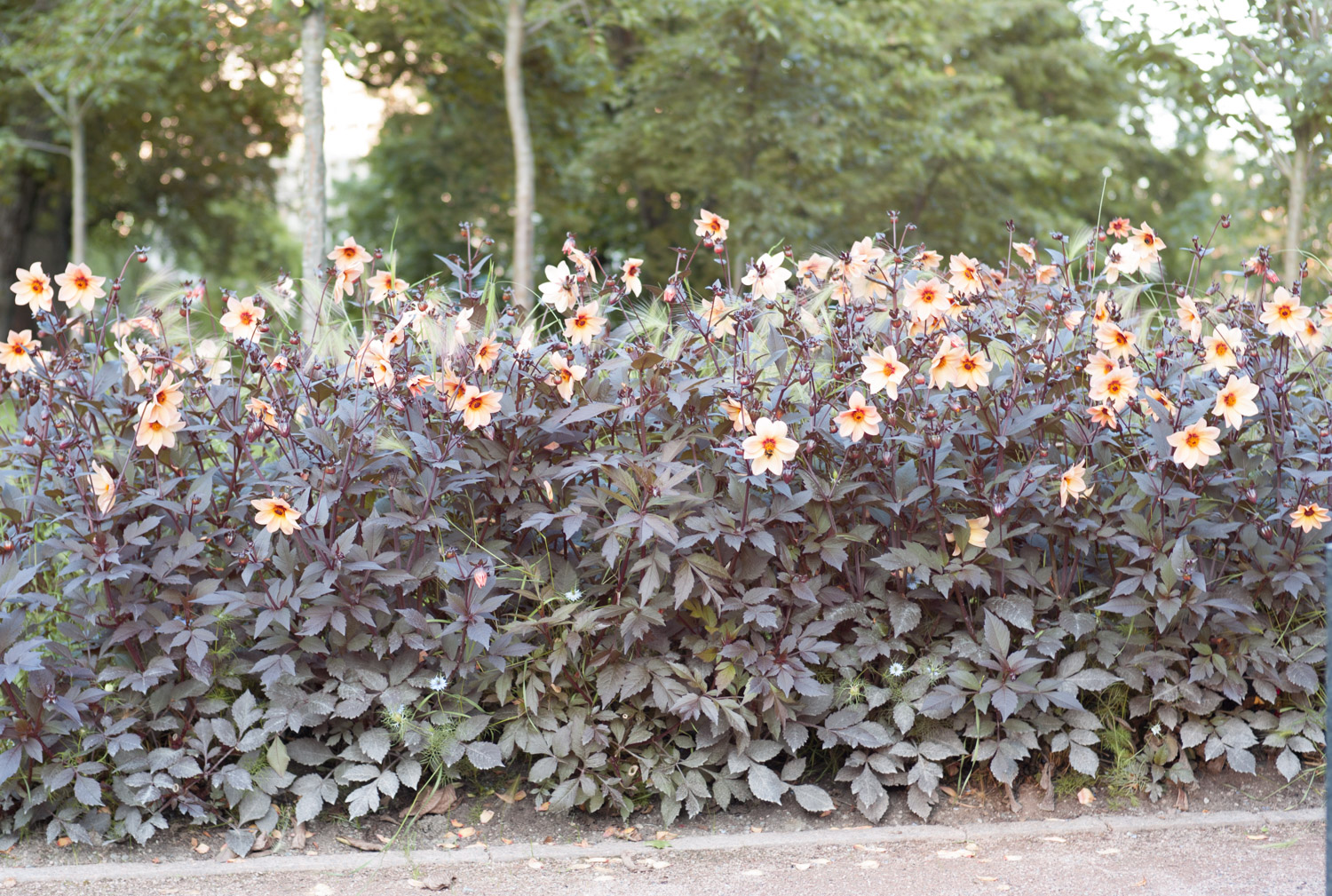
[Without IR filter.]
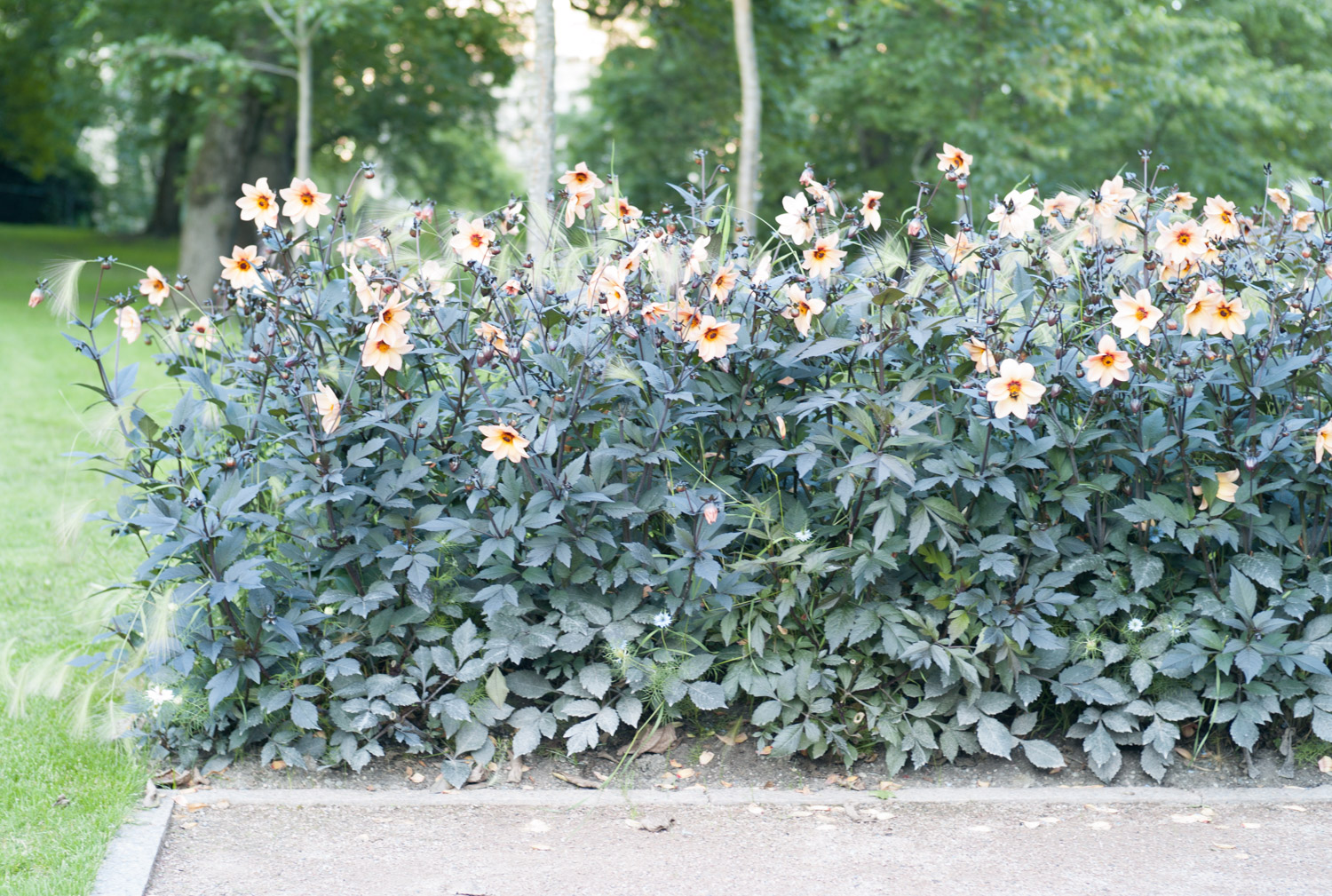
[With IR filter.]
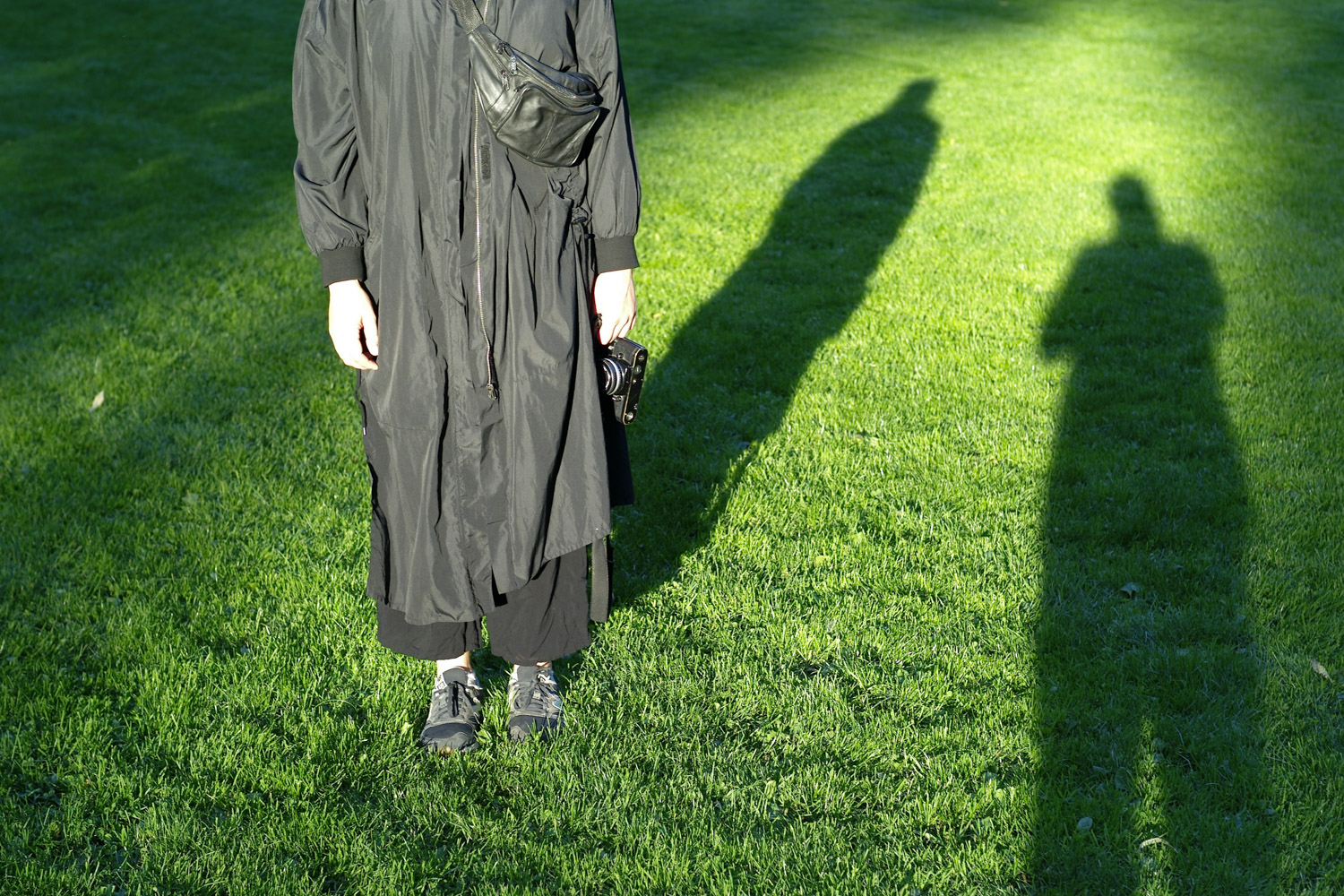
[With IR filter, black jacket looks black and green grass looks green.]
Still, most of the shots in this post are taken without the filter. There are many cases without the filter that blacks look just fine and leaves are still green. It depends on the situation and I'm not entirely sure what the determining factors are. Still, I feel like if you plan on using this camera for the long term, it's worth coughing up the cash for decent filters for your lenses.
One side note about the IR sensitivity, if you're feeling experimental, it's possible to use a high strength ND filter to block visible light and shoot infrared photography. I've seen some pretty cool posts around the internet with infrared photos taken with these cameras, so you could view this weakness as a feature if you'd like. Just remember that you'll have to zone focus as the rangefinder is only accurate for visible light.
Conclusion
There is no doubt in my mind that the Leica M8.2 has weathered the test of time. While today's cameras pack in many more megapixels and features, the M8 offers something else: an entry level view into the world of digital rangefinders. For someone looking for a more organic shooting experience akin to shooting film, there really aren't any options besides Leica. While some companies like Fujifilm come close, they are not quite there. Admittedly, I would be hesitant to use a 10MP camera in 2017 for professional work, however, I find the M8.2 to be a very pleasant camera for shooting personal work such as snapshots, street, travel, casual portraiture, and really anything where the means of distribution is over the internet. I also believe this is a great portfolio building camera, capable of providing crisp clean images with fantastic color rendition and flexible, compact RAW files. The Leica M cameras have a wide variety of truly excellent lenses both Leica branded and third party at a range of price points. These lenses are easily adapted to mirrorless cameras, giving you extra bang for your buck.

For me, the Leica M8.2 is a great camera that I plan to use a lot going forward, however it won't be the camera I choose every time. There will definitely still be occasions where I want something more pocketable, or I'll want to shoot film, or have the option to shoot video as well as stills. On those occasions, the Leica will stay home. But when I am in the mood to slow down my photography and take careful and pleasing images, or even just snapshots around town with the feeling of shooting film but not the associated costs, the M8.2 will be by my side.

